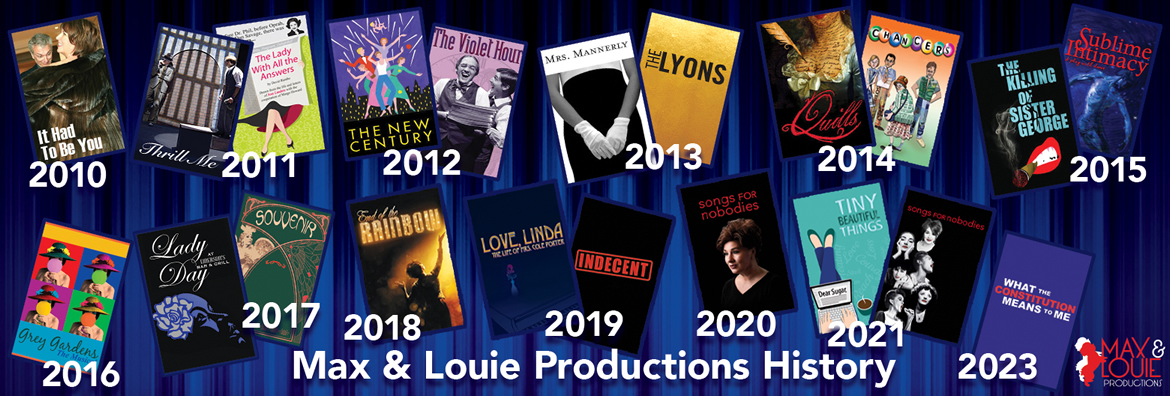The Killing of Sister George
Newspaper Review
Andrea Torrence – St. Louis Theatre Snob, July 23, 2015
Max & Louie kicks off its fifth season with Frank Marcus’s, “The Killing of Sister George,” a 1965 dark comedy with June Buckridge (Lavonne Byers), at its center. She’s a radio actor with an uncertain future with the BBC and a home life with a lover of seven years whom she’s increasingly afraid of losing.
The “Sister George” of the title is the character June plays on a radio soap — a sweet and kindly district nurse who zips around on her motorbike, doling out medicines and rustic wisdom to the residents of the fictional town of Applehurst with a happy hymn on her lips. Sister George is a popular character on the show, and so high is June’s association with her radio persona that her friends call her “George.” Off the air though, June smokes cigars, knocks back gin, and shares her West End flat with her lover, Alice “Childie” McNaught (Shannon Nara), in a relationship that bounces from moments of kindness, to bath-water drinking sadomasochism.
George suspects her character may be getting the ax soon. The ratings for Applehurst are down, and, there is the matter of an incident that’s hit the papers involving a drunk George, a taxi and nuns. Her fears are heightened when Mrs. Mercy Croft (Erin Kelley), a BBC executive, pays her a visit to talk about the program’s direction, and the fate of Sister George.
Under sharp, smart direction by Brooke Edwards, this cast of four disappears into their roles, led by Byers. Byers characteristically holds your attention as George in butch, wide-legged, domineering fashion, but rewards with the vulnerability underneath that tweed, sharing glimpses of the woman forced to extremes, and unwillingly coerced into reinventing herself. Nara also fleshes out Childie, capitalizing on every comic turn, but also giving a sliver of calculation that belies a seemingly simple exterior.
Kelley’s Mrs. Croft is spot on as the buttoned up BBC exec., sporting many of costume designer Cyndi Lohrmann’s period perfect hats, and Cooper Shaw excels as Madame Xenia, a clairvoyant neighbor who looks in on George when it all hits the fan, with a slavic-like accent that truly entertains. Actually, all of the dialects during the play are quite solid. Dunsi Dai’s cozy scenic design hits all of the right notes along with Kyra Bishop’s prop design that includes a slew of Alice’s dolls. Bess Moynihan lights the set following mood and times of day, and Michael B. Perkins provides the sound design.
The play was made into a racier film adaptation in 1968, and received a scandalous X-rating for an explicit scene between June and Alice. This catapulted the film version to an almost cult-like status. For modern audiences, the play’s tension is centered more around the relationships, and will entertain from the wonderful pre-show audio of a radio soap right until the last moments. Grab a ticket and check it out.
